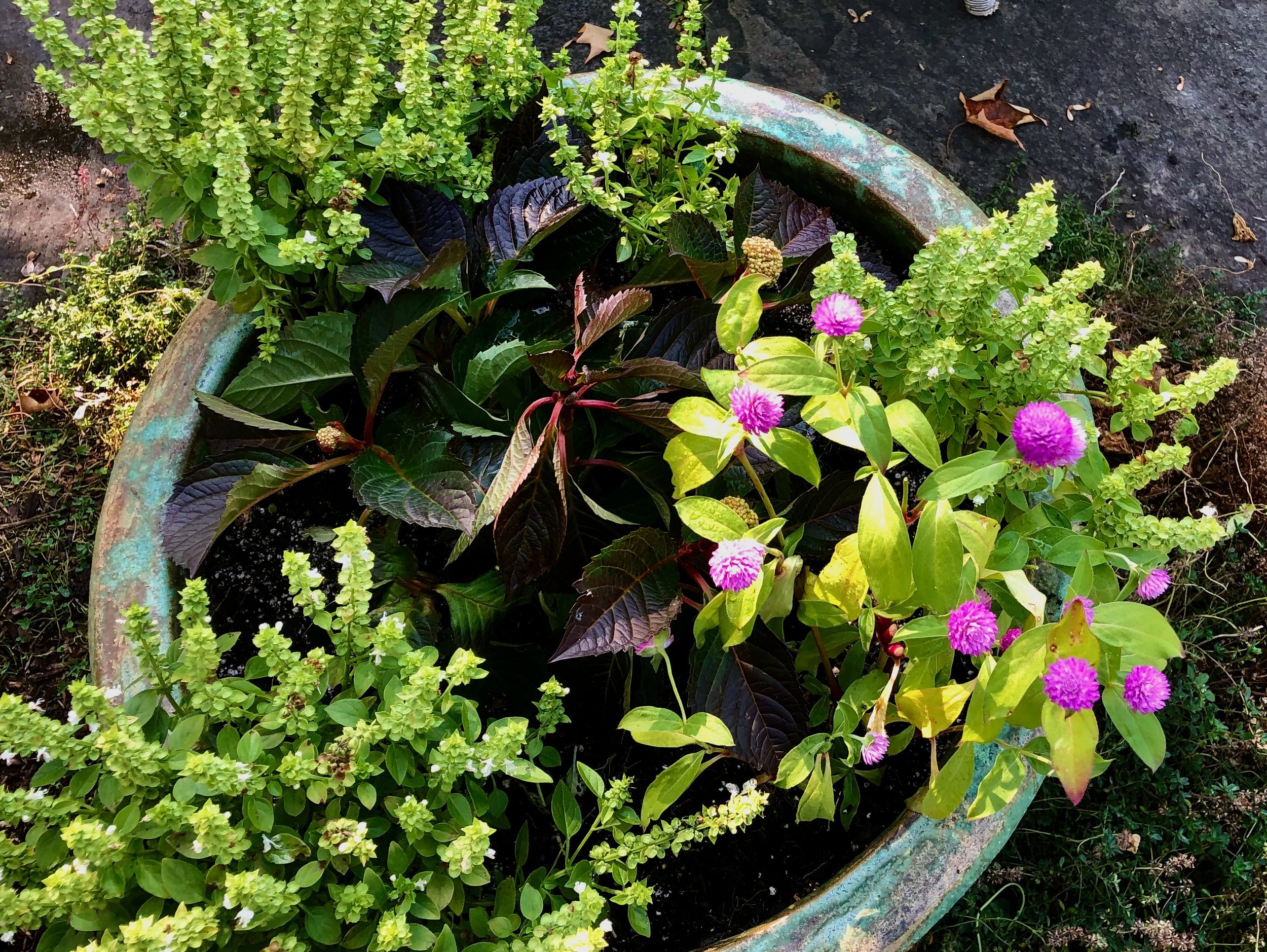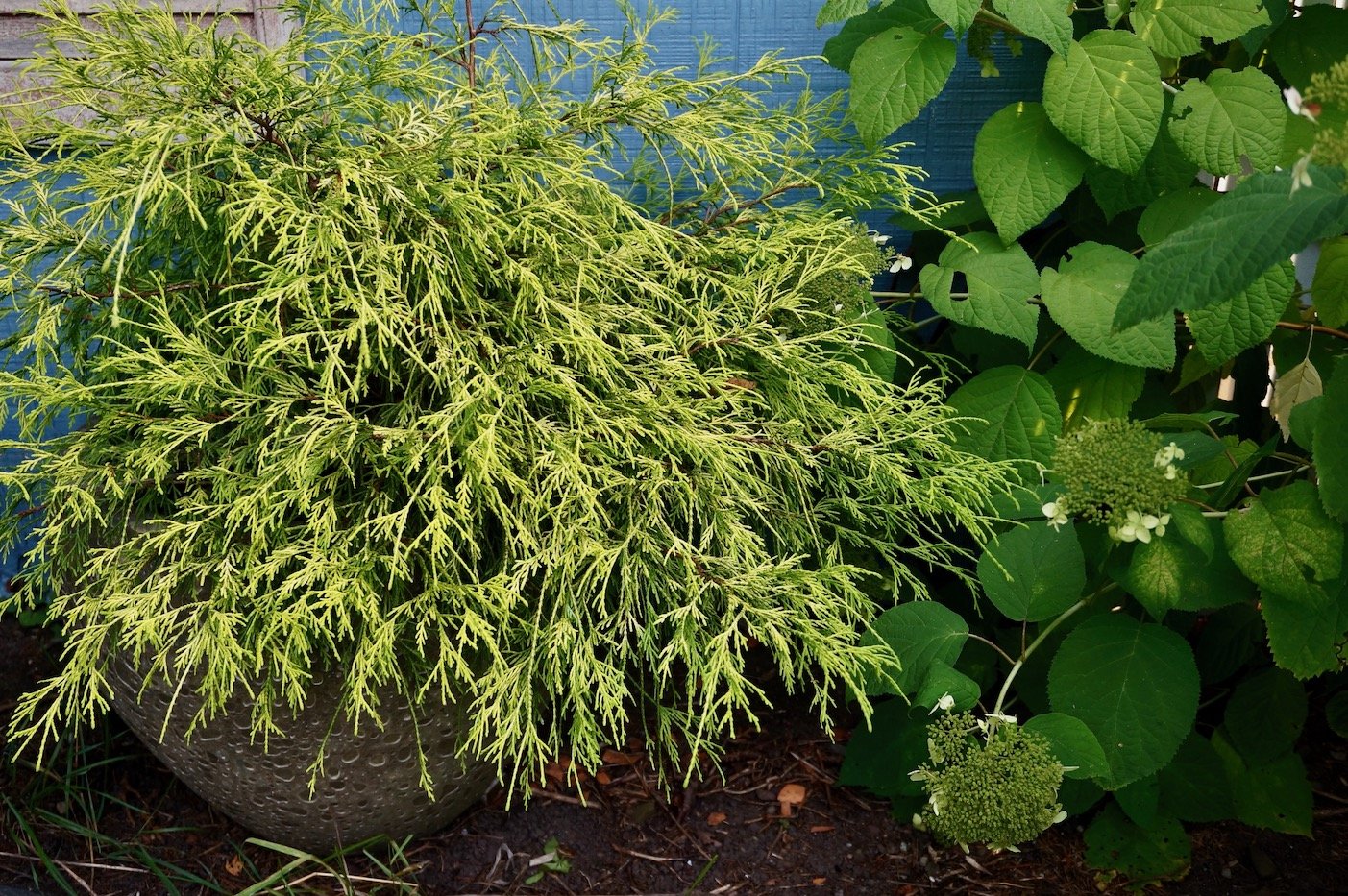Save leftover plants for later: 5 ways to savor the joys of recycling them
Putting the garden to bed for the winter is no day at the beach. In addition to dividing plants, pruning and editing, there’s all the boring stuff like putting away outdoor furniture, cushions, hoses, pots and tools.
What’s more, without fail, I always wind up with a motley assortment of plants that don’t seem to fit anywhere. Sigh…I so want to be done with this.
I’ll bet a lot of you can relate to this…..
On the other hand, when spring arrives, an extra shrub or perennial might come in handy. And, as I hate to get rid of anything, I’ve become a fan of hoarding plants for future use. There are many benefits - saving money, an opportunity to test out new plants, reducing waste, and maintaining a more sustainable garden .Wintering them over in a cold frame or another protected spot is one option, but why not have a little more fun? Many a stray has become a star in my garden. Here are some methods I’ve tried.
1. Use existing containers:
One advantage of stashing a plant in an existing container? You’re less likely to loose track of it. I’m the first to admit that labeling is not my strong point. I often forget what what I saved or where I put it. Here’s an example - a dark leafed hydrangea I put into a waning container for some last minute pizazz. This one is frost proof and stays outside all winter. The durability of the container is important. Wood, cement, fiberglass and frost free pottery can withstand winter weather - terra cotta, plastic and glazed pots will crack. Check the hardiness on any shrub you use because it should be a zone below wherever your garden is located. For example, I’m in zone 5, anything I plant in a container should be hardy to zone 3 or 4.
I may leave this hydrangea here next year and embellish it with other annuals, herbs or perennials. If not, I still have the option to put it elsewhere (at least I know where it is!). The heuchera in the below photo has been left in this container for several years and it’s still the star of the show.
Here’s another idea - just let it be. Tough herbs like Rosemary can stick it out well into January here in upstate New York. I embellished this one with fake red berries to for a Christmas decoration.
2. Unexpected pleasures:
There are many plants I love but cannot grow in my dry sandy garden (like the heuchera). Clematis is another that won’t tolerate the conditions. Even so, a trip to a favorite nursery fueled by my lust for gold plants drove me to take Clematis ‘Stolwijk Gold’ home with me a few years ago. Once I came to my senses, I realized I couldn’t plant it out in the garden. It sat on the sidelines for awhile before I had the idea of putting it into the container on my back patio.
I can’t think of a more satisfactory way to enjoy a plant you can’t grow in the garden. Here’s the view from my kitchen window. I don’t mind doing dishes in May when I can feast my eyes on those little violet flowers.
Here’s a shrub I thought would work in my garden but instead had to be relegated to the home for almost dead plants. Betula ‘Cesky Gold’- a dwarf birch with flashy gold foliage was not happy with the soil conditions in my shrub border. After torturing it for a year I relocated it to the container below.
3. Little plants get big:
It’s easy to overlook all those little plants - four inch pots, plugs and cuttings stuffed into tiny pots. You think they’ll never amount to anything but the passage of time has taught me otherwise.
When a friend gave me bunch of native perennial plugs, I had nowhere to put them. They sat under a tree for awhile but finally my conscience won out. Having nothing better on hand, I planted them in long rectangular containers I kept by the driveway - at least they’d get watered there. These little plugs surprised me - most flowered and filled in nicely. Now they’re big enough to plant out somewhere in the garden.
I grew this hydrangea from a cutting. The boxwood next to it was a 4” pot I picked up at a garden show. I put them directly in the container with some annuals. I didn’t pay much attention to them for a year or two but they finally got so big I couldn’t fit anything else in. Not bad for a freebie.
Hydrangea ‘Tuff Stuff’ and Boxwood ‘North Star’
4. Stash Stuff:
If you can’t find a place for a plant before the snow falls, store them in a protected spot. I cart mine to a sheltered corner on the south side of my house between my raised vegetable beds. A cold frame is ideal, but any protected area like this will work. I wedge pots in closely for insulation. After it freezes I cover them with leaves for further protection. It usually rains enough to keep the pots moist, but if not I water them well before the first freeze.
5. Go plant shopping:
By the time spring rolls around, I usually can’t remember what I’ve stashed away. That makes rediscovering them even more fun. Here are a few containers I put together using some surprise ‘leftovers’.
Where does it all end up?
Eventually, repurposed plants outgrow their container and are either planted out in the garden or given to friends. I can’t say enough about the virtues of growing small plants into large ones, especially woody plants. About a third of all the plants in my garden came from my stash of four inch pots and cuttings.
It’s an inexpensive way to grow your garden if you have a little patience and truly rewarding!














